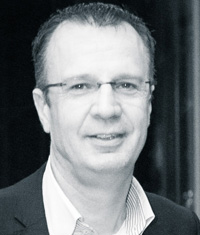We are now able to detect DNA fingerprints from micro-seepage and to use machine learning to create maps that identify where hydrocarbons are likely to be found. It's an exciting breakthrough, and the applications are being explored. Welcome to an interview with Chris te Stroet of Biodentify.
What is your name and your background?

Chris te Stroet, Biodentify
My name is Chris te Stroet. My educational background is in modelling (PhD in Systems Theory at the Faculty of Mathematics of Delft). I have always applied this knowledge in geosciences at a Dutch contract research organization, named TNO, first in environmental sciences and water management. When I started to lead a group of people I also did a masters at the business school Neyenrode. I always liked to find innovations with my group to help to solve real world problems. In the beginning, I was also 6 years part time professor at the Delft University, but in the end I liked it more to work on a real proposition for organizations in the market than developing science.
What is your connection to the energy industry?
The last 8 years at TNO, I was director of Oil and Gas. In this time we did contract innovation for the global Oil and Gas market in a broad spectrum of niche topics, ranging from flow induced problems in risers or compressors to geoscience problems like production optimization or carbon storage. We licenced our technology and one of our innovations I decided to spin out myself and which is now a startup called Biodentify.
What is your latest endeavor? What are the goals?
The endeavor now is to make Biodentify a growing high tech company that predicts prospectivity before drilling just using a shallow soil/seabed sample. After roughly 10 years of education, 10 years of working on the content and 10 years of managing a group I would love to spend 10 years on entrepreneurship and developing a real substantial company.
How did you have the idea of creating product that identifies oil?
TNO is a broad organization and I found an application in Health Sciences that identifies a gland tumor on the basis of the microbial fingerprint of the mouth mucus. My idea was to "cross-over" this technology to find oil and gas by quantifying the impact on the soil microbial ecosystem because of microseepage. This is a very small, non-measurable, vertical displacement of gas microbubbles that goes upward by buoyancy from a hydrocarbon source in the deep subsurface. At a very very small scale, no seal is perfect.
How does it work? Please provide a few examples of Biodentify in action
We take small soil sample (1 foot below the surface, only 1 mm3 in size) and extract a DNA fingerprint from the microbial ecosystem in it. There can be hundreds of thousands of different species present in such a small soil sample. All of them can be quantified in one run by a so called 16SrDNA analysis. The second latest technology development we use is in Machine Learning. We use this to find differences between fingerprints above a hydrocarbon accumulation; a relative very small amount of species like or dislike the gas stemming from microseepage and are therefore very sentitive 'soft sensors'. Because of developments in Machine Learning we are able to unravel the tiny differences within Terabytes of data.
What are your plans for the future?
To help to develop prioritized drilling for shale and de-risk offshore wells with our technology and establish a solid company with an accepted new game changing approach. And after the 10 years entrepreneurship, may be 10 years on... I guess that one thing I have learned is that you should be open for opportunities, but you cannot control the future.